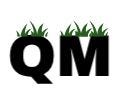Crop Modeling, Machine Learning, Quantum Computing
On Monday, July 20th, I had the great honor of talking to Dr. Allard De Wit from Wageningen University, one of the main contributors of the WOFOST crop model. WOFOST is one of the best crop models being used to measure crop yields around the world. You can read more in my blog post, Why Crop Modeling? I got the opportunity to ask him some questions about WOFOST, as well as crop modeling in general.
Probably the biggest thing I learned from our conversation was that one of the main obstacles that blocks crop modeling from moving forwards is the lack of data.
The first area where this lack of data is apparent is in the localization of crop modeling. Currently, many crop models are region specific, and the results from each model are limited in their local relevance. There are certain factors, like planting date, and crop cycle length, that a farmer can control, but the crop model will not be able to take into account those factors because it does not have access to that data. WOFOST is currently planning on including those two factors in their next release which will definitely help make local crop models more accurate.
Another area where this lack of data is an obstacle is in the incorporation of a multiscale model. This is because we also lack data on how factors at the atomic/molecular scale like genotype interact with different environmental stresses. Additionally, new algorithms that incorporate this new genetic data would need to be created in order to create this multiscale model.
Machine learning crop models are currently being developed and perfected. I think that machine learning crop modeling seems to be the best way to apply quantum computing. Because quantum computing is known for its fast computational speeds and optimization capabilities, I believe that it will be able to enhance machine learning crop models, improving their accuracy. I also believe that quantum computing will be able to help machine learning create new crop modeling algorithms that incorporate the genetics at an atomic/molecular scale.
Quantum computing should be able to be applied to crop modeling through this machine learning approach in the future. Hopefully, the integration of quantum computing and crop modeling will improve the accuracy of crop models, and help farmers increase their crop yields.
I will work hard to make this happen!
